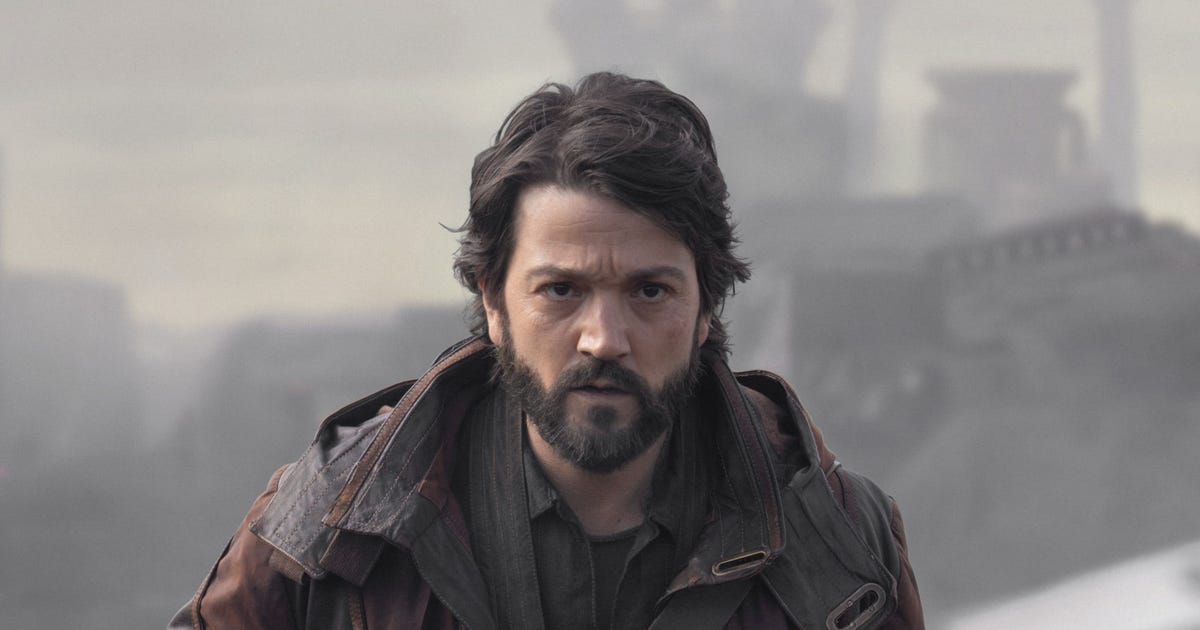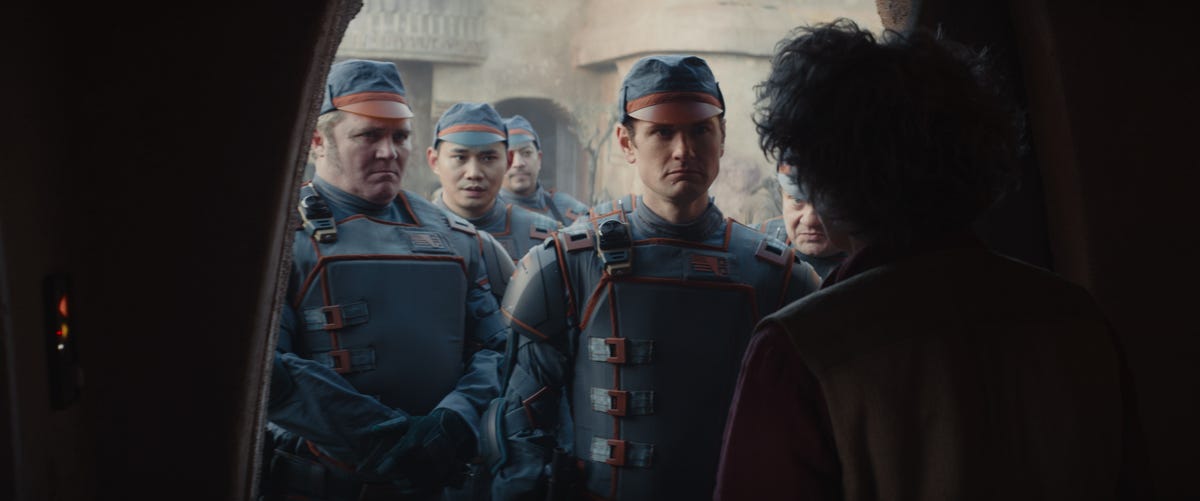
In the very first Star Wars movie, A New Hope, Han Solo didn’t believe in the Force. Fans have had to awkwardly write that off as a continuity error, but the new Disney Plus Star Wars series Andor, perhaps for the first time, shows a version of the story where someone might not believe in the Force — or hope, or anything at all.
Andor is streaming now through Nov. 23 with new episodes every Wednesday. Diego Luna returns to the role of the morally dubious title character he played in 2016 Star Wars movie Rogue One, and the series presents an origin story for Rogue One’s mean and moody intergalactic spy. The show delves into his earlier life as a small-time hustler on a backwater planet — before getting swept up in something bigger and darker than he could ever have believed.
The usual spectacular space battles and Force-powered lightsaber duels seem a long way away from Andor’s hardscrabble vision of burly miners, scrappy junkyards and downtrodden people. Star Wars has often gone to ground level of the galaxy’s myriad planets, but this is a whole other level of mundane misery. In fact, the rain-lashed neon brothels and accompanying moody synth music of the opening episode reminds you more of another sci-fi classic. In its somber tone, glacial pacing and general air of menace, Andor initially screams Blade Runner.
Star Wars fans will spot plenty of references to the saga, of course. But the considered pacing in particular marks this as different from previous action-packed Star Wars adventures on the big and small screen. It’s created by Tony Gilroy, a writer and director of the Bourne movies, but the most obvious comparison is with his nuanced and slow-burning masterpiece Michael Clayton. Playing out like a grounded real-world spy drama full of low-key geopolitical intrigue, Andor shares that film’s themes of intertwined corporate and government wrongdoing, of normal people ground down by the system, of bureaucrats and bullies happy to be cogs in the grinding system through greed, fear or general exhaustion.
Andor establishes a galaxy of greed, thuggery, naked ambition — and that real-world driving force which is often forgotten by movies: basic incompetence. We’re familiar with the Evil Empire and its gleaming starships and crisp uniforms, but Andor delves into the lesser functionaries who support the Empire through their base urge to put on a uniform and use it. To steal, to bully, to climb the ladder, to take and take.
As in the recent Obi-Wan Kenobi miniseries, part of the bad guys’ downfall comes from their own infighting. But intriguingly, Andor hints at a similar division with the good guys of the rebellion, who apparently aren’t all square-jawed good guys uniting behind a white-clad princess to save the day. This evokes real-world rebellions like the Spanish Civil War in a vision of freedom fighters and ideologues who can’t help squabbling among themselves even when facing a common enemy. It’s a humanizing view of the Rebel Alliance that adds nuance rarely seen in the big-screen version. And it hints that the show will explore how hard it is to overthrow a seemingly invincible system — you don’t just roll straight off a farm and into the cockpit of an X-Wing to bring down an entire empire in time for tea and medals.

Darth Vader and the Emperor aren’t the only villains in the Star Wars universe.
Disney Plus
I admit to being skeptical about Andor spinning off from Rogue One, for the simple reason that it’s a prequel to a prequel. I’ll die on the hill that prequels are pointless, unless they tell you something that changes the way you view the original story: The Disney Plus series Obi-Wan Kenobi almost got there but was yanked back by continuity limitations at the end, although Andor at least has less baggage tied to the preceding and succeeding trilogies. But the fact remains that we know where Cassian Andor ends up.
And yet, strangely, this emerges as a strength of the series. The deliberately paced story builds a sense of creeping menace, an unhurried tension, that almost teases you with your knowledge of where it’s going. It’s all about inevitability. Andor and his ilk are trapped in chains of uncaring capitalism, bureaucracy and authoritarianism, drawing tighter around them the more they struggle. Of course it’s going to end badly for him — for all of them. Why fight it? Everything’s screwed, so why waste your time trying to change anything?
Unfortunately it’s difficult to unpack these themes more at this point, because only the first four episodes have been shown to reviewers. And the measured pace means the story has yet to unfold very far by that point (there are 12 episodes in total). The series has an amazing cast, including Genevieve O’Reilly, Stellan Skarsgård, Adria Arjona, Denise Gough, a standout Kyle Soller and Killing Eve’s Fiona Shaw (plus various British TV actors here and there). But their stories have barely gotten going by episode 4.
On the one hand, the pacing is an important part of Andor’s worldbuilding. That’s a phrase often used to describe how a story colors in extra detail for setting and characters — the Star Wars merchandizing machine is notorious for producing action figures of every human in a funny hat or alien with a bulbous snout who ever wandered through the background, regardless of whether they deserve plastic immortalization. Even Andor’s most minor characters have a rough-hewn richness that suggests they have something going on beyond the screen.
In toy terms, I would absolutely drop a few bucks on Guy Who Rings Bell.
But while Andor is rich with names of planets and random snippets of galactic history tossed off in dialogue, the show’s slow-paced worldbuilding is more about mood, tone, theme. We spend time with these characters to see the lives (and lies) they live, painting a picture not just of an alien galaxy but of an inescapable mindset, a pervasive attitude toward the system that ensnares them.
At the same time, I would like to see things crack on a bit. There are an awful lot of scenes of people walking about the place, which could be tightened up, and a series of flashbacks don’t really deserve the ponderous reverence with which they’re stretched out over several episodes. Lacking The Mandalorian’s bite-size weekly bursts of action, Andor may prove too inert for some viewers.
But don’t be fooled. It may move slowly, but the suspense ratchets up and the morally ambiguous themes sneak up on you. By episode 3, the worldbuilding raises things to an intensity that might surprise you based on how small the events are. Andor doesn’t need whooshing spaceships or flashing lightsabers to raise the stakes for a compelling and morally ambiguous drama grounded in real human hopes and fears. For once, this galaxy isn’t so far away.
